Plantain is another favorite medicinal weed of mine. This plant can easily be found in lawns, cracks of sidewalks, along roadways and in abandoned fields. Plantain is native to Europe and Asia, and now can be found throughout North America.There are two main varieties of plantain: broad leaf and narrow leaf, both can be used medicinally and have the same action as each other.
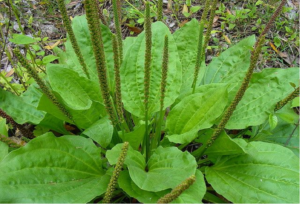
Broad leaf plantain
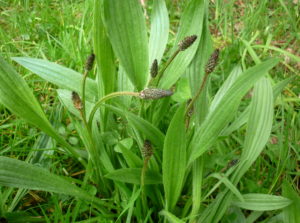
Narrow leaf plantain
Here at Quail Run Farm we cultivate the narrow leaf plantain in our orchard meadow. It is one of the plantings I use around the base of our fruit trees. Plantain is a “pioneer plant” when the soil is harsh or has been disturbed plantain likes to come in and clean things up, making the environment more suitable for other plants. That is why you will find plantain along sidewalks and roads, and one of the reasons I have chosen it for planting in the Orchard Meadow. The land here is very abused, very infertile, lacking organic matter and vitality. Plantain has a deep tap root, it will going down into the soil, nice and deep breaking up hard dirt and adding organic materials. At the surface it is great for “chop and drop”, several times a year I can just cop the leaves and leave them right on the ground, thus adding organic matter and mulch, helping retain moisture and add fertility. However my favorite thing about plantain is its medicinal properties!
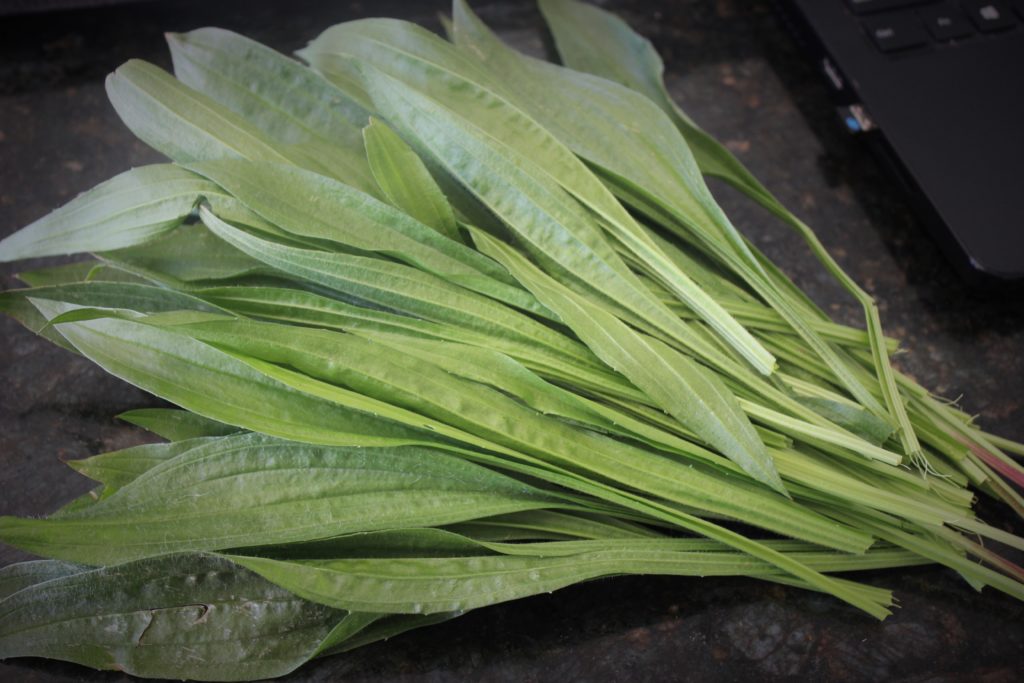
One of plantain’s most common uses is as a poultice for stings, bites, scrapes and rashes. The simplest way to harness plantain’s healing powers is to crush a few fresh leaves, and apply to the affected area. Replace fresh leaves as necessary. The fresh plantain “juice” takes the pain away and seems to work wonders at staunching blood flow and closing wound edges. It’s also wonderfully refreshing and soothing to sunburn.
Plantain infusion (tea) can also be used as a soothing wash for sunburn, windburn, rashes, or wounds. To make a plantain infusion, simply add a small handful of fresh plantain leaves to a cup or two of water, and bring to a gentle boil. Turn off heat, and let steep, then strain out the leaves. The infusion is best when fresh, although it can be stored in the refrigerator for a few days.
http://www.prairielandherbs.com/plantain.htm
Whenever my children have a cut or insect sting, I walk out to the meadow, pick a leaf and chew it up (my kids think that is so gross) and apply a bit of the macerated leaf to the wound and cover with a band-aid. The pain and irritation go away quickly and in the case of a open sore, heals very fast.
Plantain leaf ointment can stop itching faster than anything I’ve ever used, and it eases even the most intense itches. From diaper rash to flea bites, eczema to dry skin, plantain turns tears of pain to smiles of relief. New mothers swear by plantain ointment as a diaper cream, both to prevent and to treat diaper rash. It relieves the itch of heat rash and poison ivy/oak rash, too.
Susun Weed
In the winter time, however, there is not fresh plantain available, it is sleeping deeply under the snow and frozen ground. My favorite way to preserve plantain for medical use is to make an infused oil. It’s a very simple process that I will walk you through.
After picking the plantain leaves I do a quick shake to get dust off, but I do not wash the leaves. Any water left on those leaves may promote spoiling while it is infusing, and because my orchard is not sprayed I don’t need to wash off any herbicide, and any other things that may be clinging to the leaves are good for our immune system and microbiology. I chop the leaves roughly and then pack them as tightly as I can in a quart canning jar, over that I pour olive oil, using a chop stick or butter knife to get out as many bubbles as I can. The jar is then labeled with a date and stored in my pantry for six weeks. When the six weeks are up the leaves are strained out and the oil is stored in a cool dark place. This oil will be good for about a year. The oil can also be used to make an ointment by adding bees wax, something I will be experimenting with this summer.
Plantain, another glorious weed, a treasure chest of healing right at our feet.
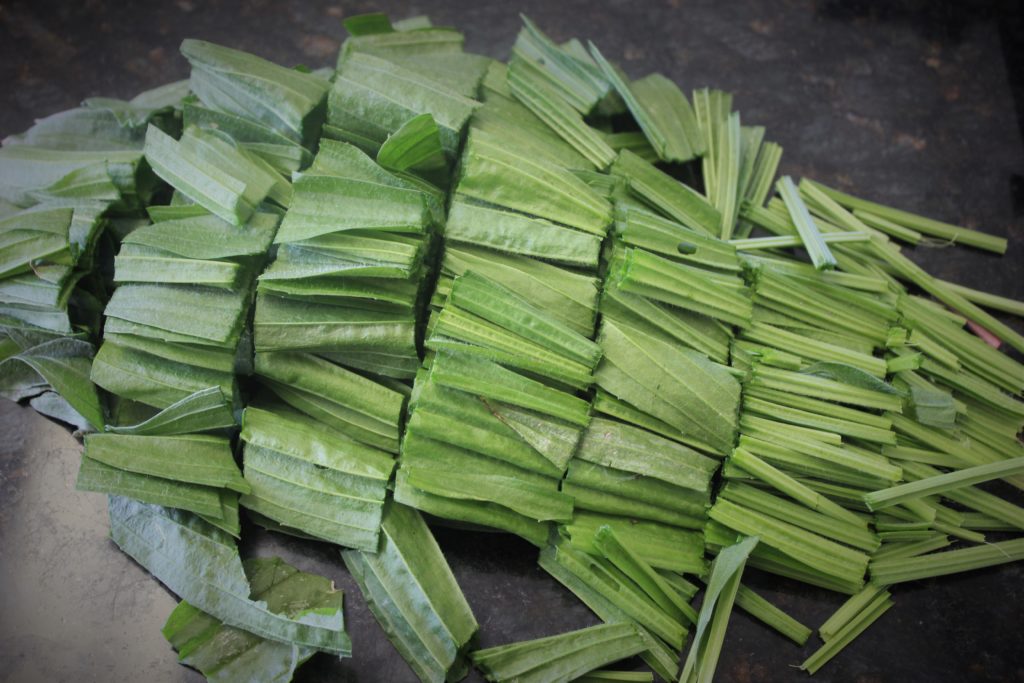
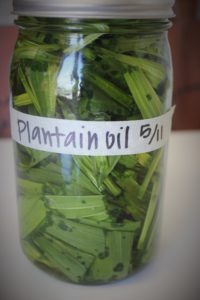
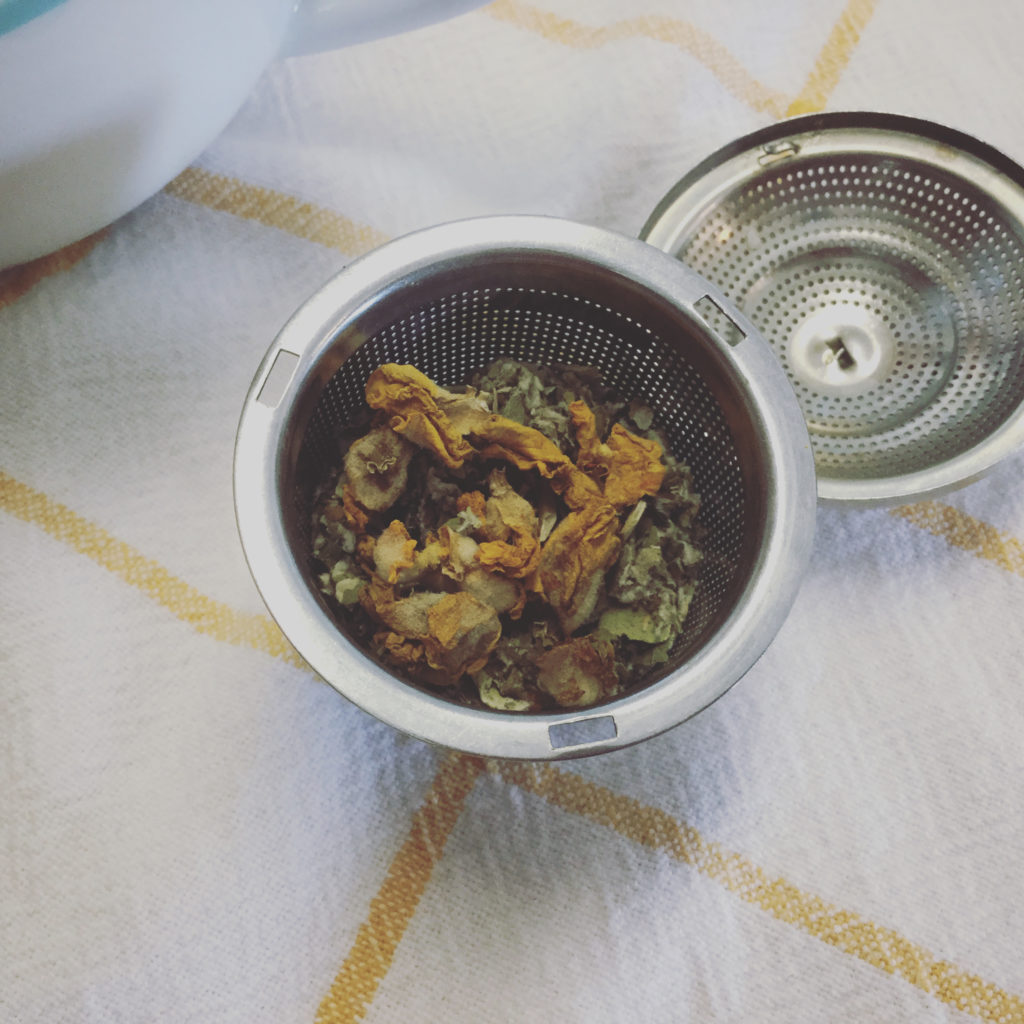

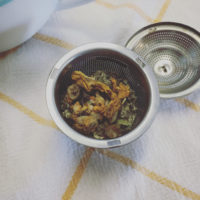
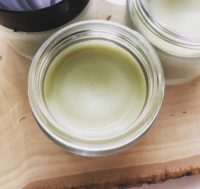
 Plantain salve is one of my very favorite salves and I have been making it for several years now. I use it for any type of bug bite or sting and all sorts of cuts, scrapes and burns, with nine children, family and friends bumping around the place that means a lot of salve. During the summertime plantain can be used fresh, but it isn’t always convenient, chewing up a leaf, applying and covering a mosquito bite with a band-aid isn’t as simple as dabbing on a bit of salve. It is also nice to be able to keep a small pot in my purse or bag to have on hand when I am not where plantain is growing. So every fall and winter I am sure to make plenty of salve to have on hand and some to sell to family and friends. The process though starts in the summer time when the days are long and the plantain is thick under the apple trees.
Plantain salve is one of my very favorite salves and I have been making it for several years now. I use it for any type of bug bite or sting and all sorts of cuts, scrapes and burns, with nine children, family and friends bumping around the place that means a lot of salve. During the summertime plantain can be used fresh, but it isn’t always convenient, chewing up a leaf, applying and covering a mosquito bite with a band-aid isn’t as simple as dabbing on a bit of salve. It is also nice to be able to keep a small pot in my purse or bag to have on hand when I am not where plantain is growing. So every fall and winter I am sure to make plenty of salve to have on hand and some to sell to family and friends. The process though starts in the summer time when the days are long and the plantain is thick under the apple trees.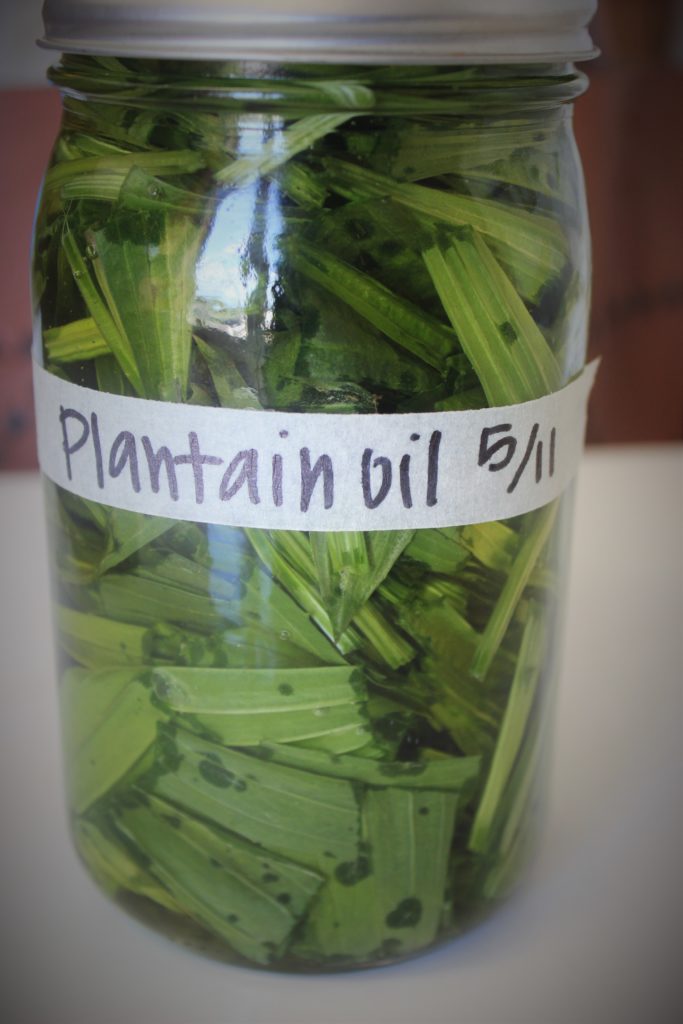 Handfuls of plantain is harvested, washed, cut and packed in quart bottles, then pure olive oil is poured over the top until all the plant matter is covered. It then sits in my sunny kitchen window for at least six weeks, being shaken daily, sometimes longer. This makes a beautiful green infused oil. this oil itself is nourishing and healing for the skin, but a bit messy.
Handfuls of plantain is harvested, washed, cut and packed in quart bottles, then pure olive oil is poured over the top until all the plant matter is covered. It then sits in my sunny kitchen window for at least six weeks, being shaken daily, sometimes longer. This makes a beautiful green infused oil. this oil itself is nourishing and healing for the skin, but a bit messy.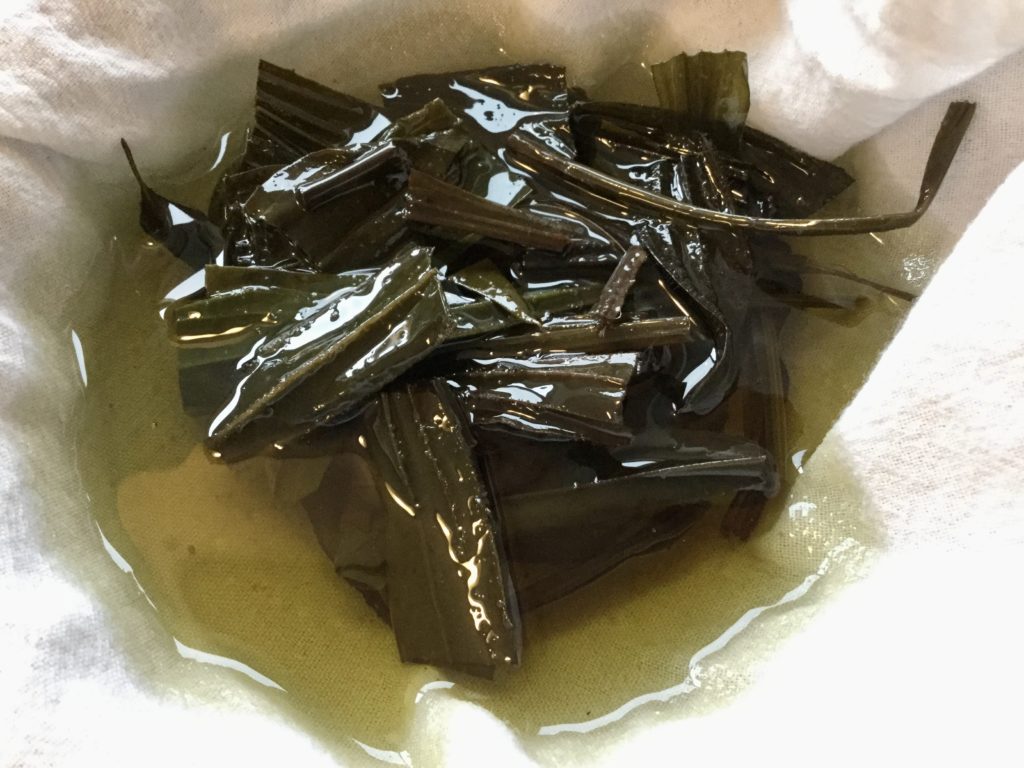 When the oil is properly infused it is poured into a fine wire mesh colander that is lined with a clean cotton cloth to slowly drip for several hours. After all the oil has dripped through I will take and ring it tight, getting every last drop of the oily goodness. My hands are so happy after these days of wringing oil out, the plantain infused oil is so good for the skin.
When the oil is properly infused it is poured into a fine wire mesh colander that is lined with a clean cotton cloth to slowly drip for several hours. After all the oil has dripped through I will take and ring it tight, getting every last drop of the oily goodness. My hands are so happy after these days of wringing oil out, the plantain infused oil is so good for the skin.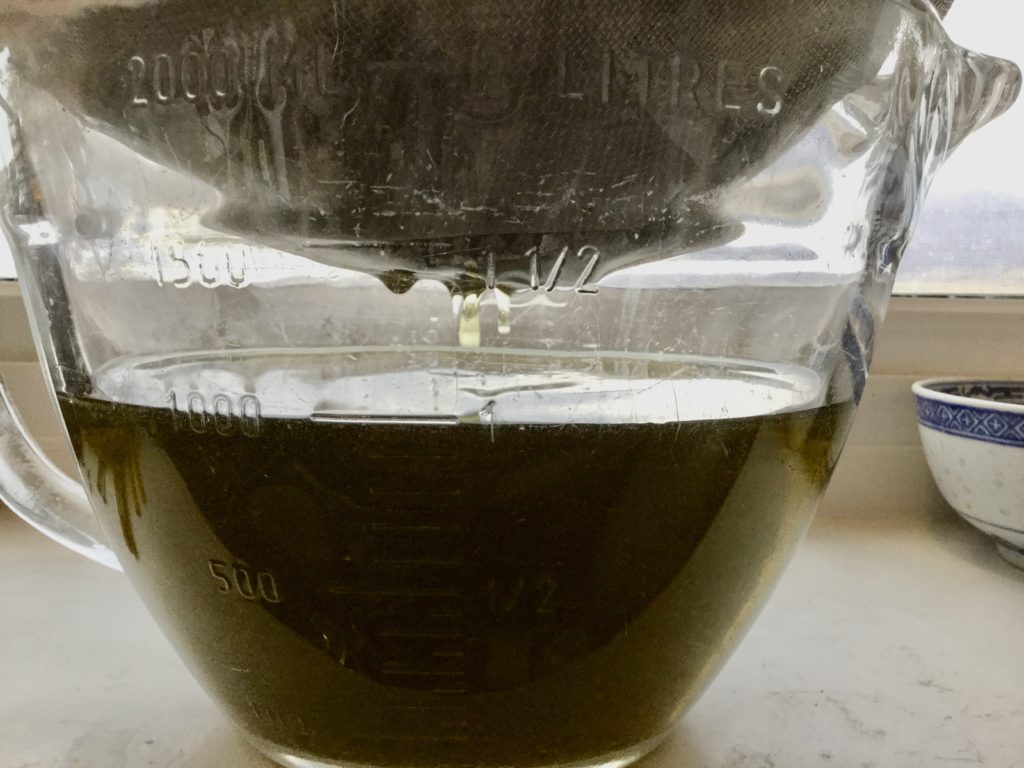
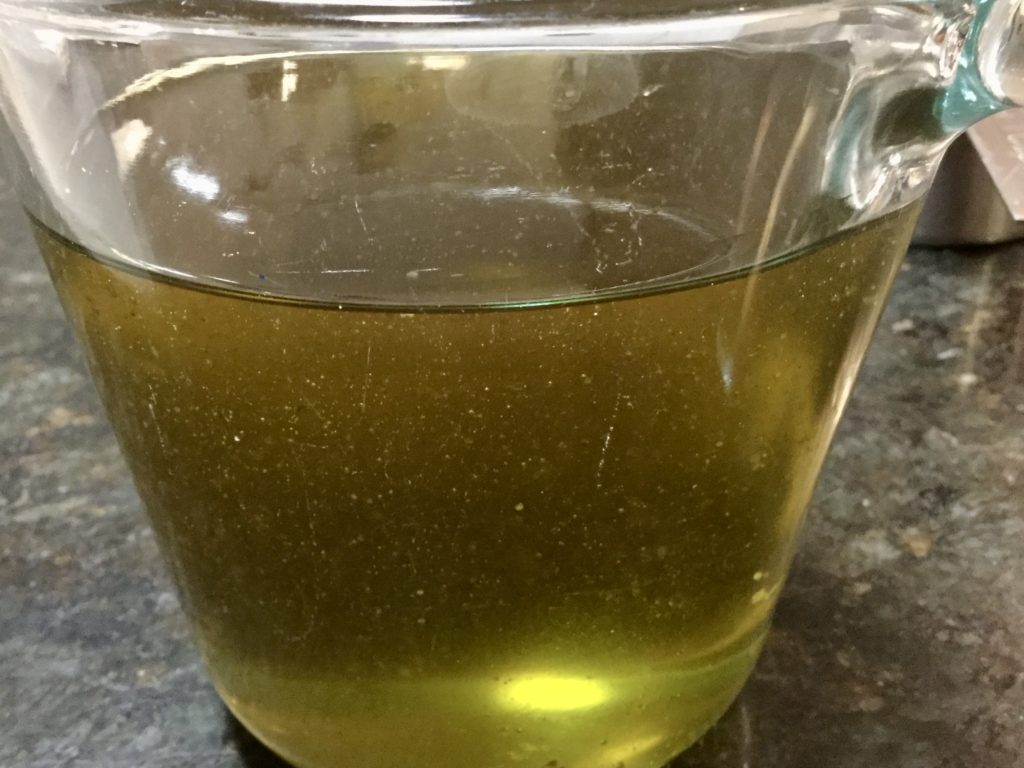 After the Plantain has been strained out of the oil it is stored in quart jars in the refrigerator to keep it as fresh as possible until salve making time. I, using low heat, slowly melt beeswax in with the oil. As soon as the bees wax is completely melted I take the salve off the heat and let it cool some more, then I add lavender essential oil and yarrow essential oil. While still warm is it is poured into jars and closed tightly. They are kept refrigerated until used.
After the Plantain has been strained out of the oil it is stored in quart jars in the refrigerator to keep it as fresh as possible until salve making time. I, using low heat, slowly melt beeswax in with the oil. As soon as the bees wax is completely melted I take the salve off the heat and let it cool some more, then I add lavender essential oil and yarrow essential oil. While still warm is it is poured into jars and closed tightly. They are kept refrigerated until used.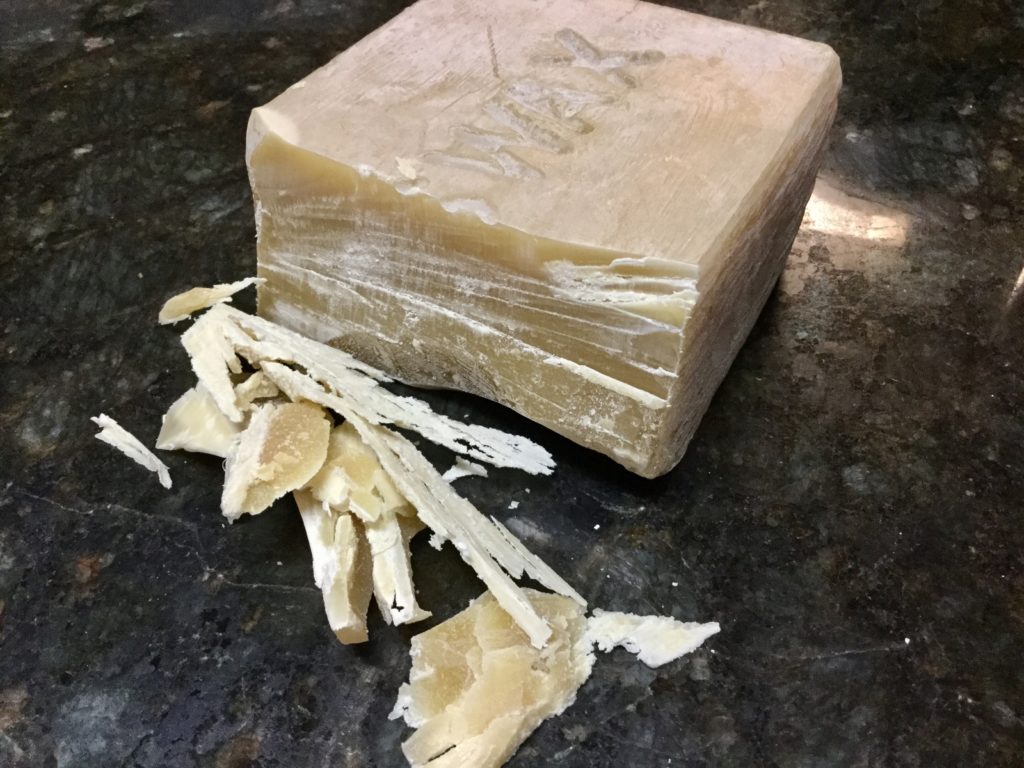 My family uses this salve exclusively, even my littlest kids know where the “green salve” is and know to put it on cuts, scrapes and burns. Plantain salve mixed with calendula salve is very effective when dealing with suborn diaper rash. We always have a little jar sitting by my tinctures and herbs ready for use and usually you can find a jar in my purse or diaper bag.
My family uses this salve exclusively, even my littlest kids know where the “green salve” is and know to put it on cuts, scrapes and burns. Plantain salve mixed with calendula salve is very effective when dealing with suborn diaper rash. We always have a little jar sitting by my tinctures and herbs ready for use and usually you can find a jar in my purse or diaper bag.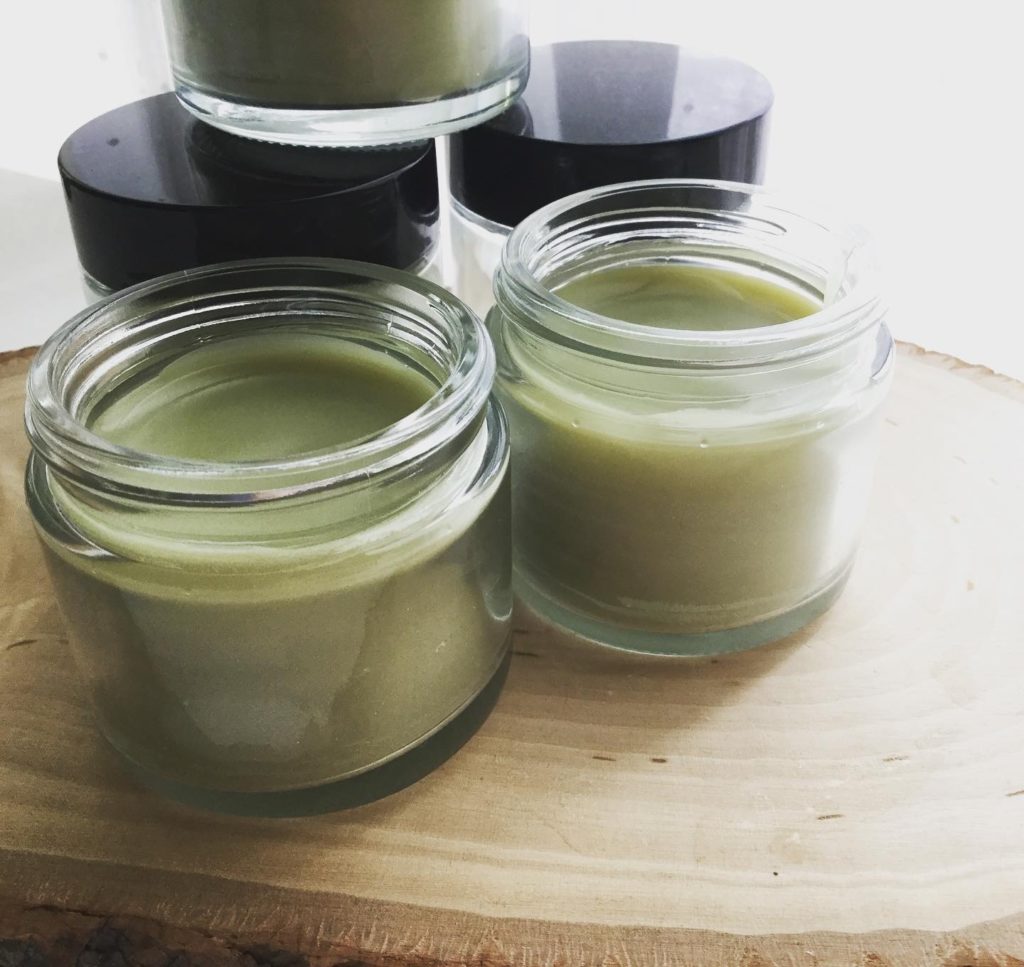 This year we will be sharing our favorite “green salve” with our customers in our shop and at the farmers market. This green goodness is too wonderful not to share!
This year we will be sharing our favorite “green salve” with our customers in our shop and at the farmers market. This green goodness is too wonderful not to share!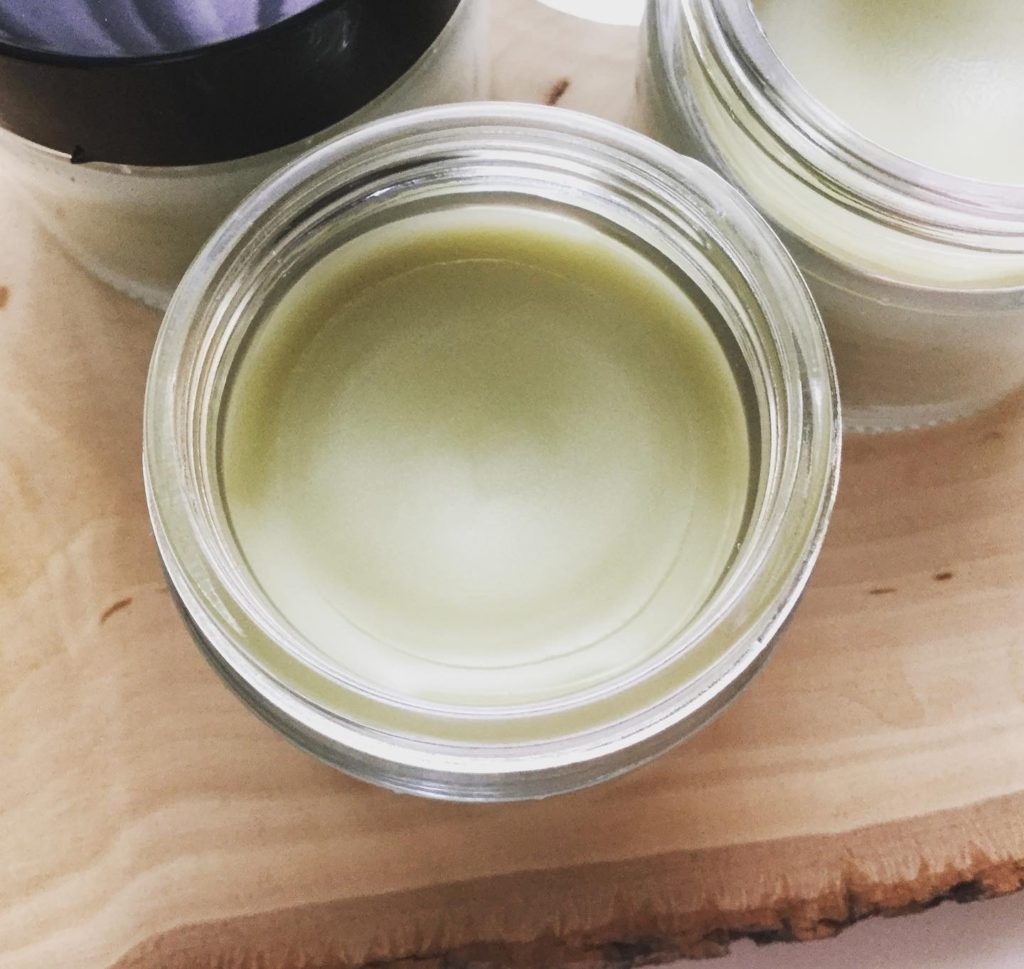
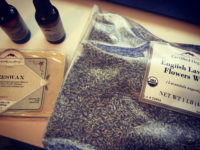
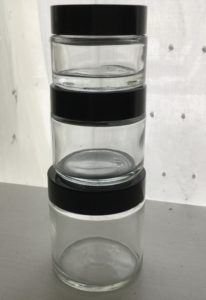
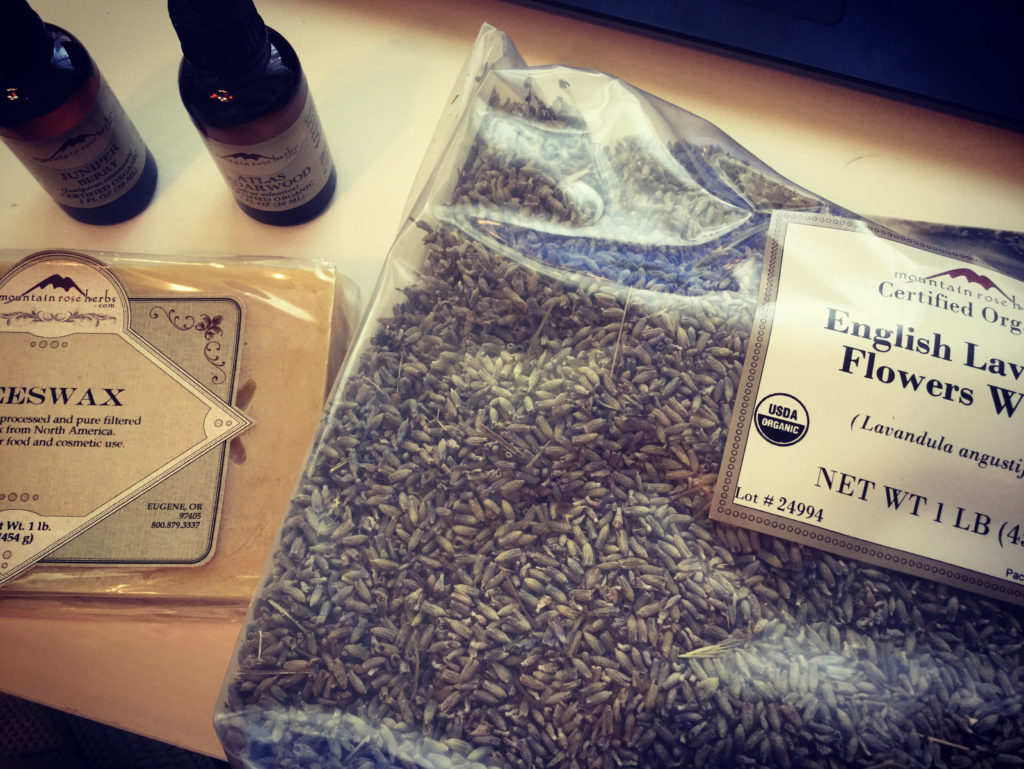
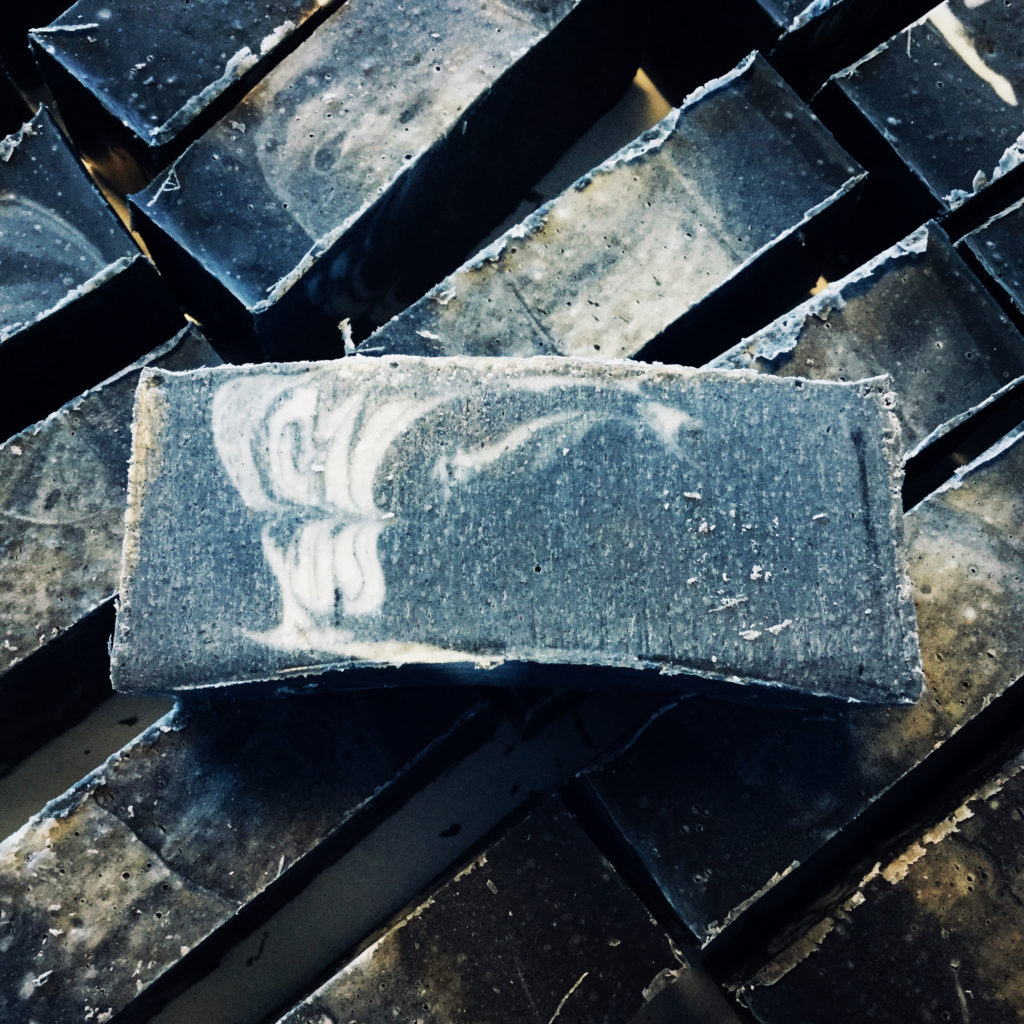
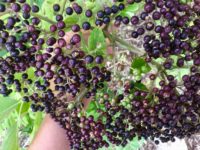
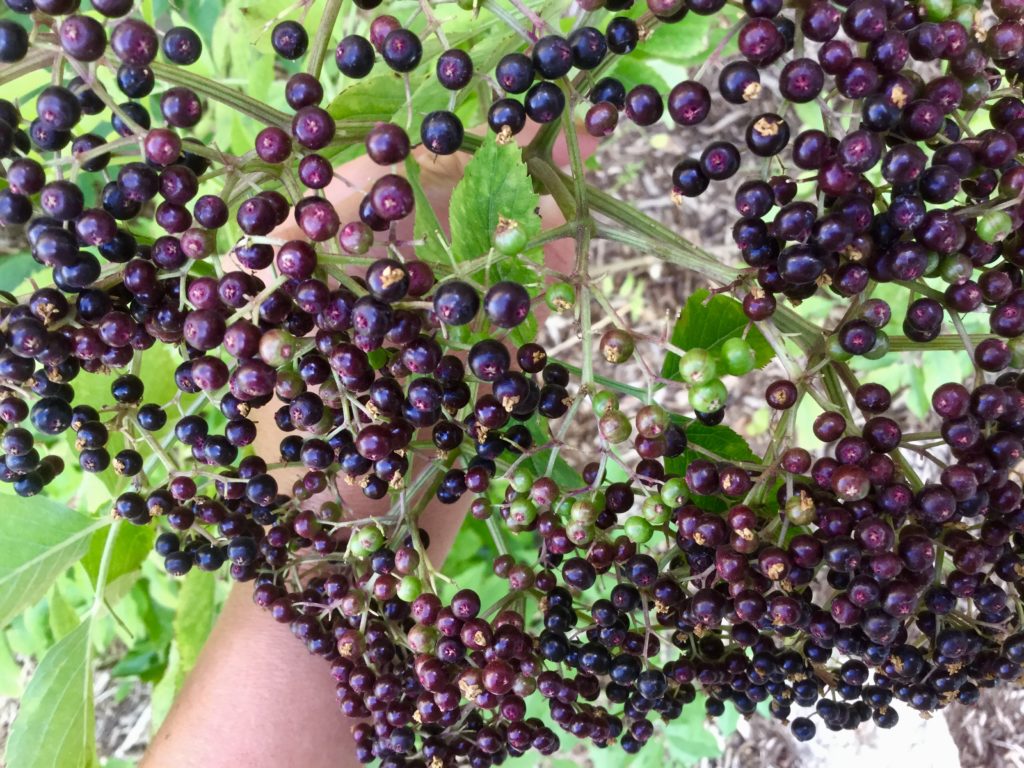
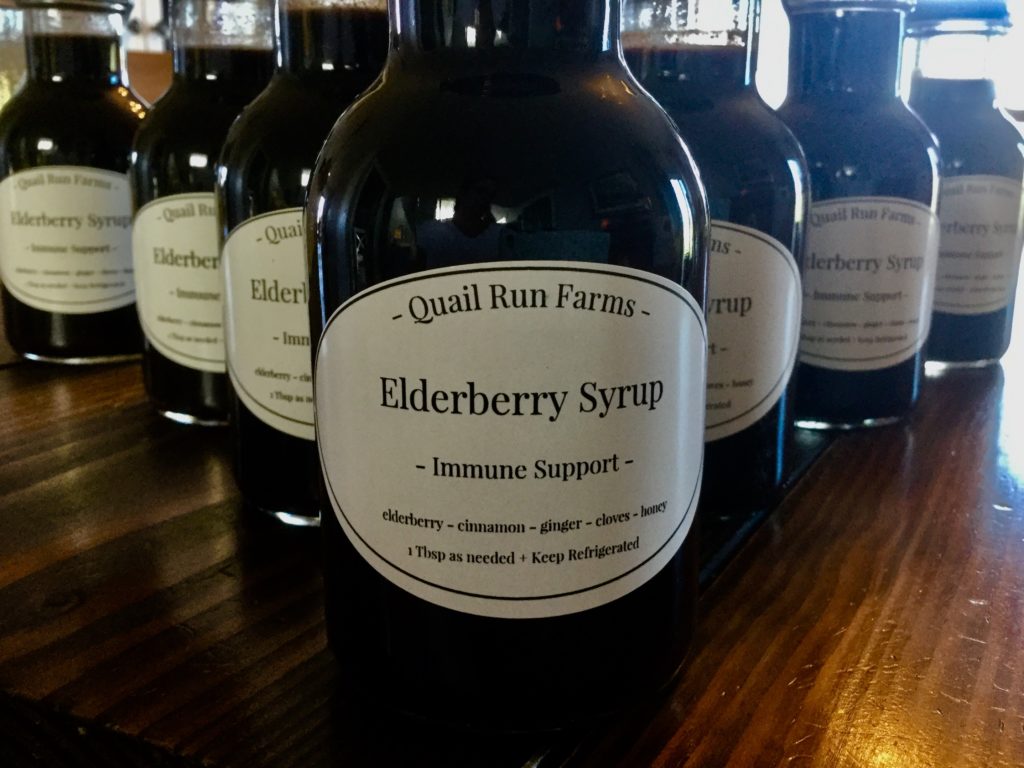
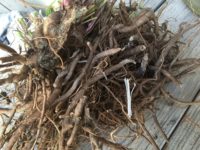
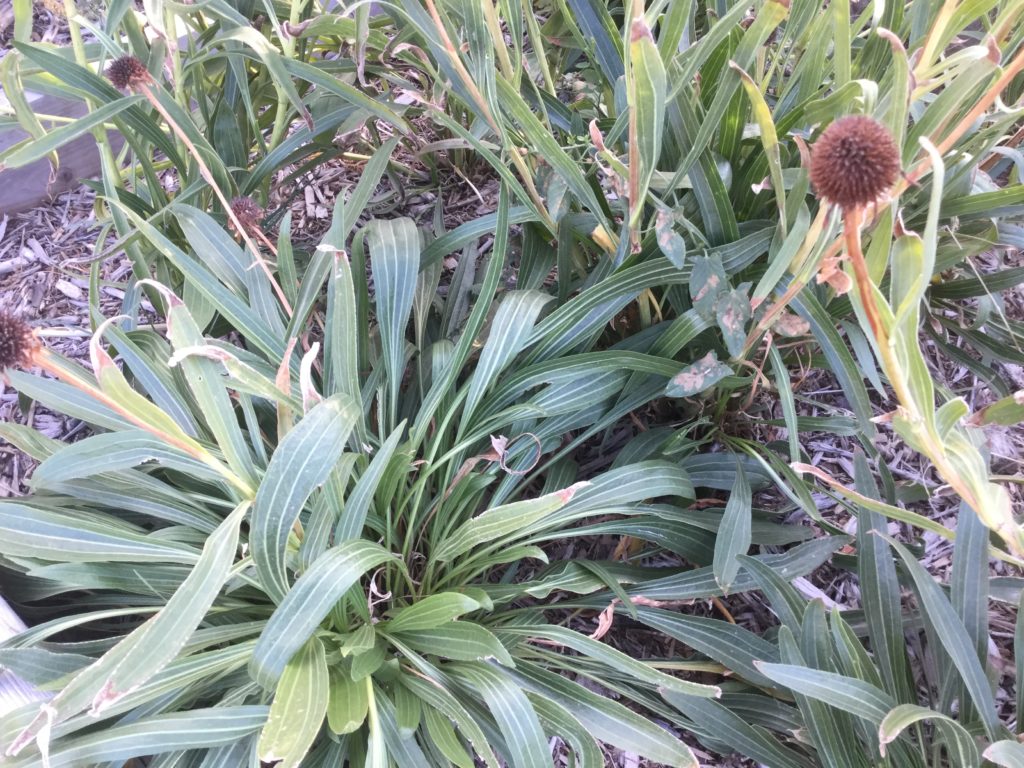
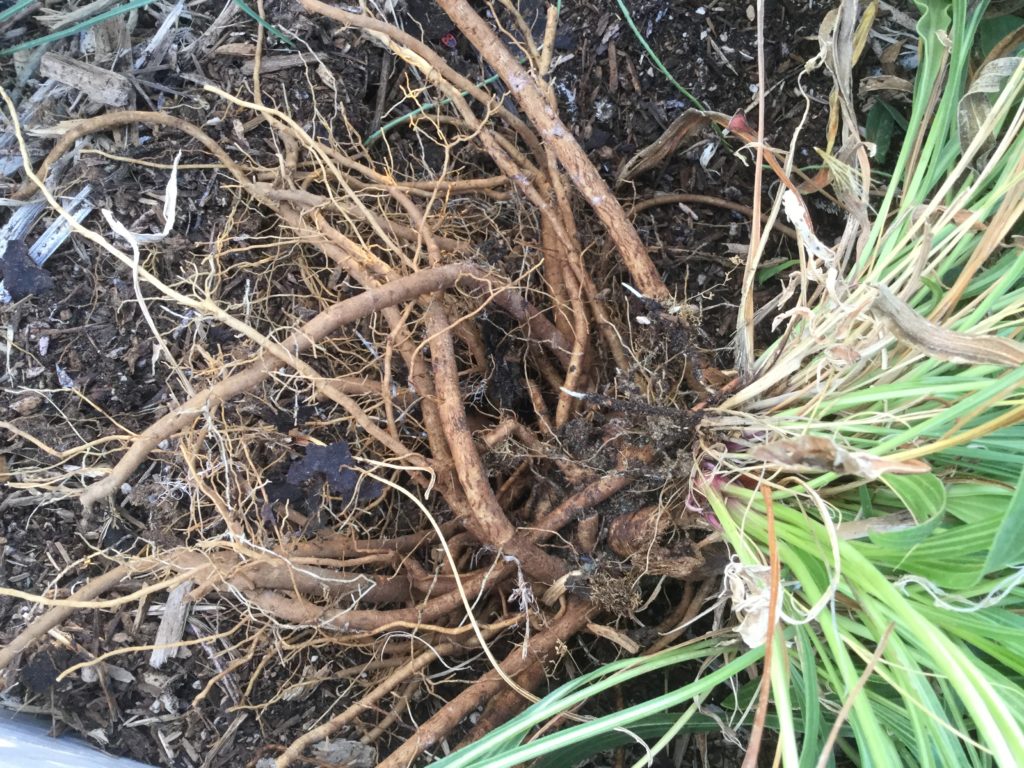 In my patch I picked about half of the biggest most healthy plants. Healthy plants make good strong medicine. With a fork I gently lifted each plant with its root system intact. They looked so beautiful.
In my patch I picked about half of the biggest most healthy plants. Healthy plants make good strong medicine. With a fork I gently lifted each plant with its root system intact. They looked so beautiful.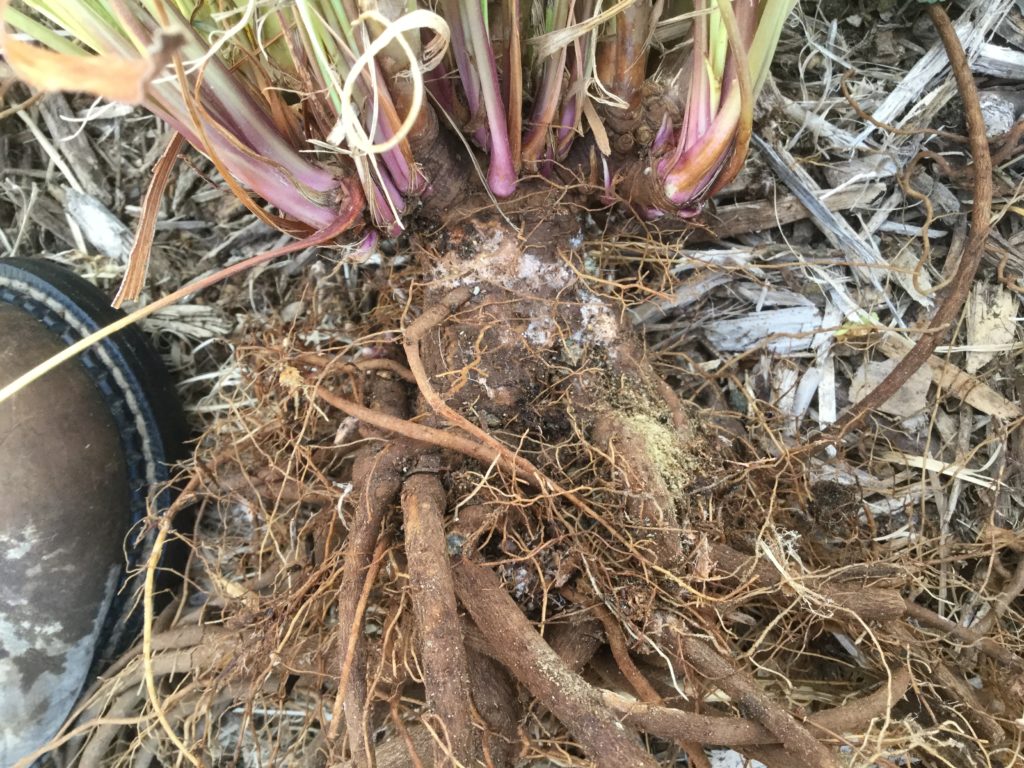
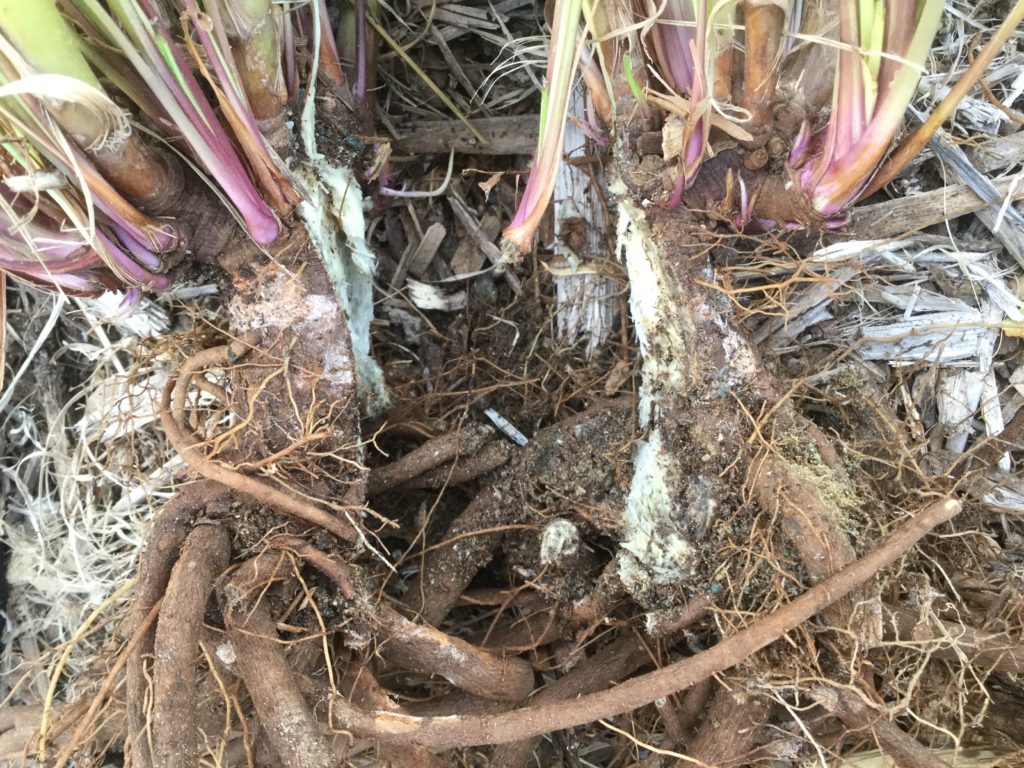 The big roots were sliced in half and about half of the smaller roots broken off, the green foliage and flower heads were trimmed back. The smaller roots and about a third of the big root stalks were set aside in my foraging basket.
The big roots were sliced in half and about half of the smaller roots broken off, the green foliage and flower heads were trimmed back. The smaller roots and about a third of the big root stalks were set aside in my foraging basket.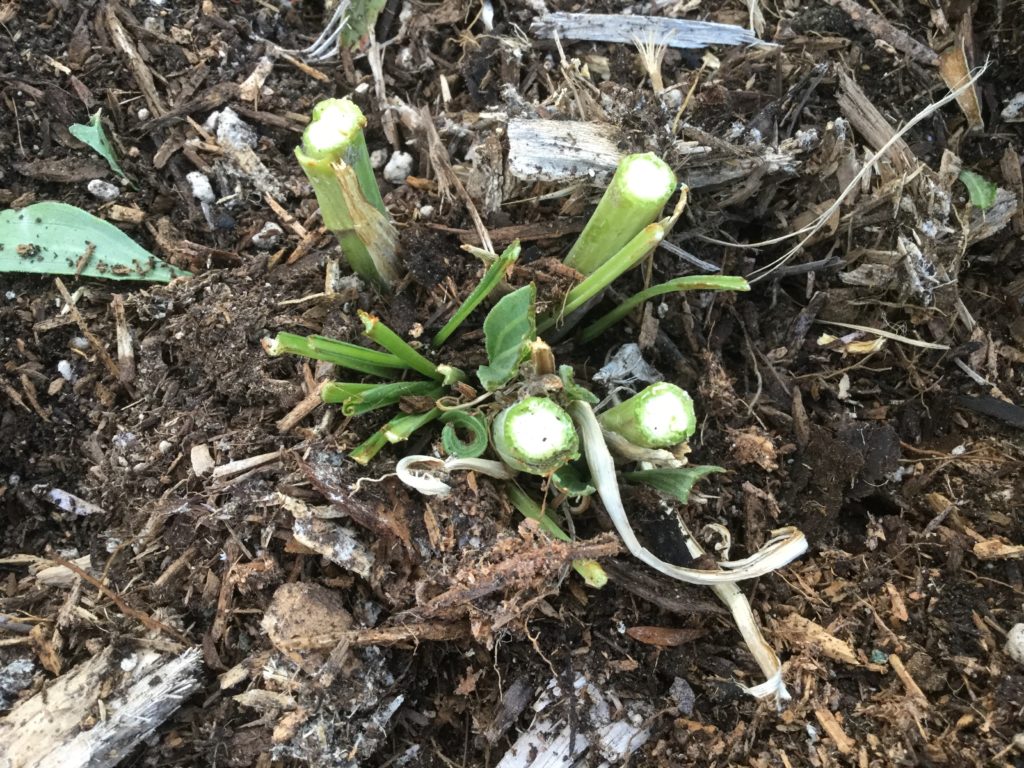 The remaining roots were tucked back into their original spots, a few were planted in a new patch. My goal is to have a continual supply of 2-3 and 4 year roots. To do this I have to be very deliberate and thoughtful about how much I take, how much I re-plant and where.
The remaining roots were tucked back into their original spots, a few were planted in a new patch. My goal is to have a continual supply of 2-3 and 4 year roots. To do this I have to be very deliberate and thoughtful about how much I take, how much I re-plant and where.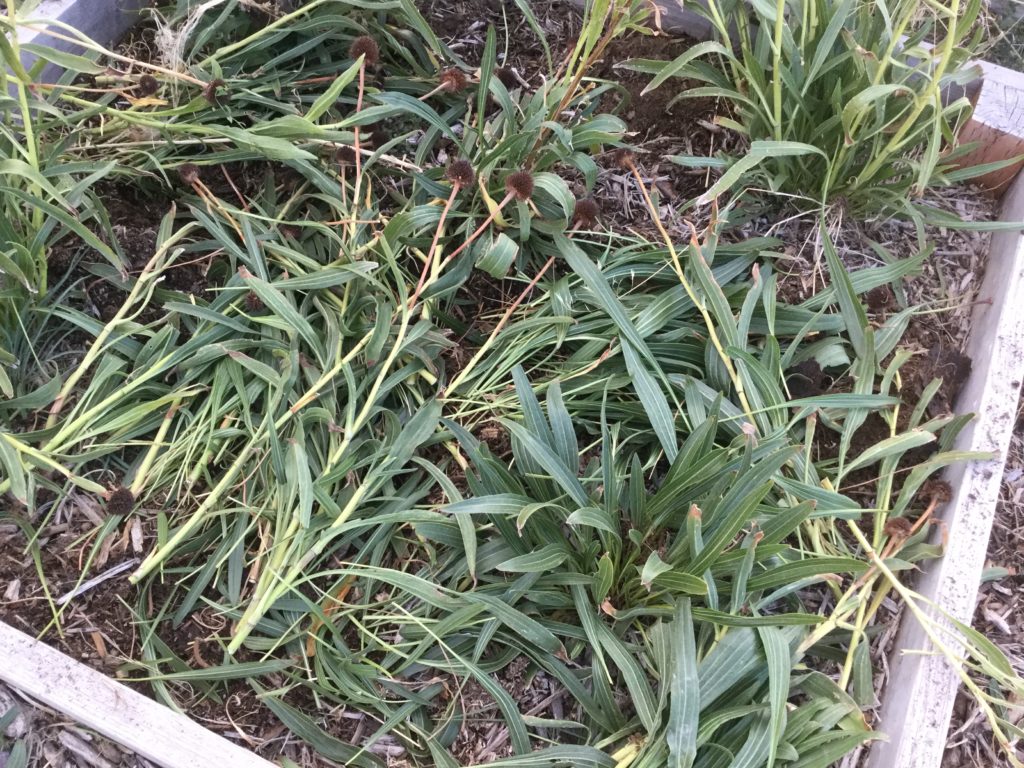 And true to my nature and philosophy, all the greens and spent flower heads were laid right back from where they came. They will compost in place, feeding the soil that fed them.
And true to my nature and philosophy, all the greens and spent flower heads were laid right back from where they came. They will compost in place, feeding the soil that fed them.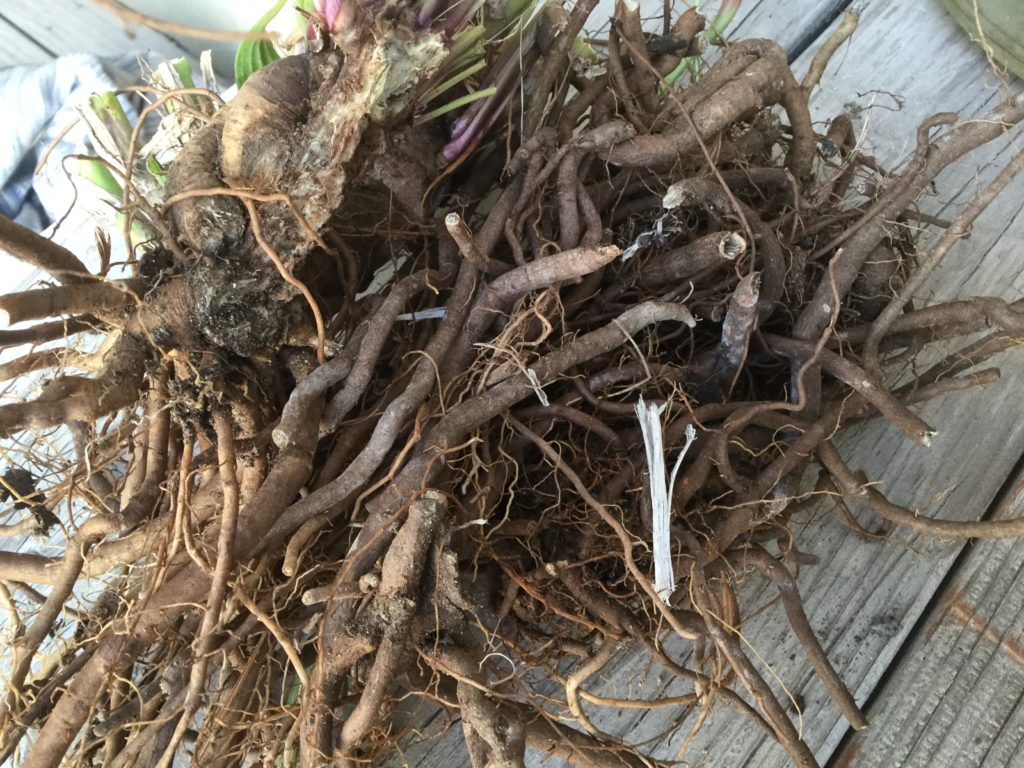 This is my harvest, they will dry out for a few days, the dirt brushed off and then they will be tinctured for six weeks. These beauties will help keep my family healthy throughout the winter. They are also going to go into a formula I am working on that will be an even more powerful ally against the cold and flu.
This is my harvest, they will dry out for a few days, the dirt brushed off and then they will be tinctured for six weeks. These beauties will help keep my family healthy throughout the winter. They are also going to go into a formula I am working on that will be an even more powerful ally against the cold and flu.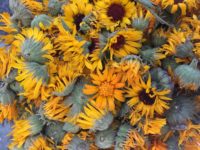
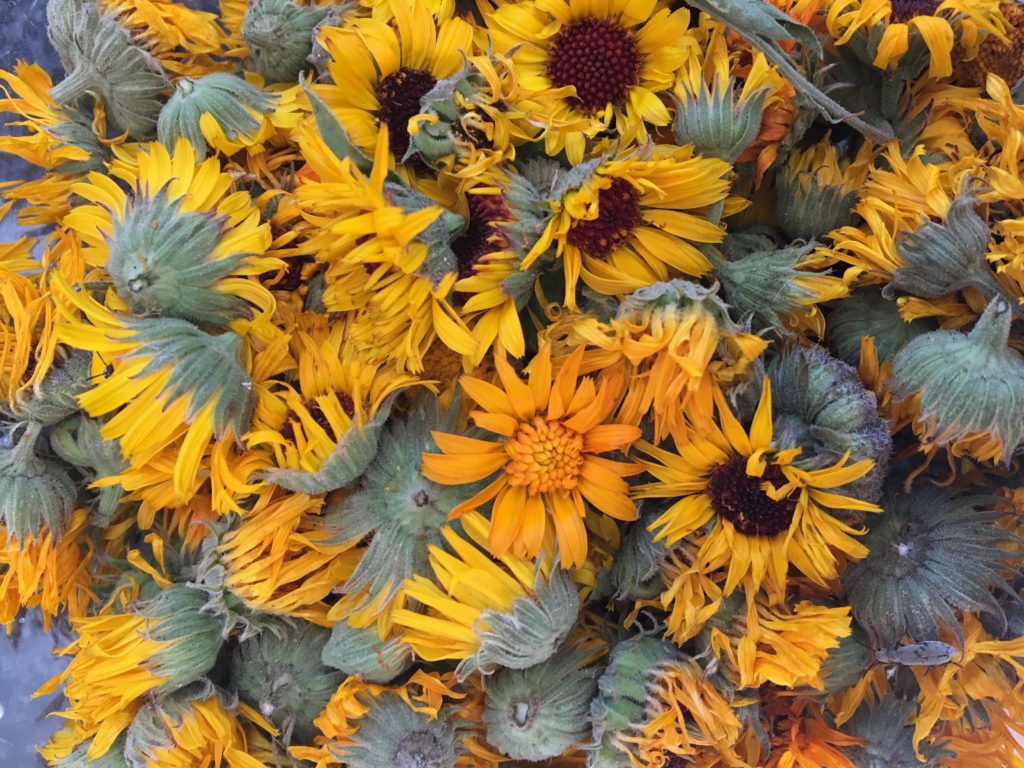
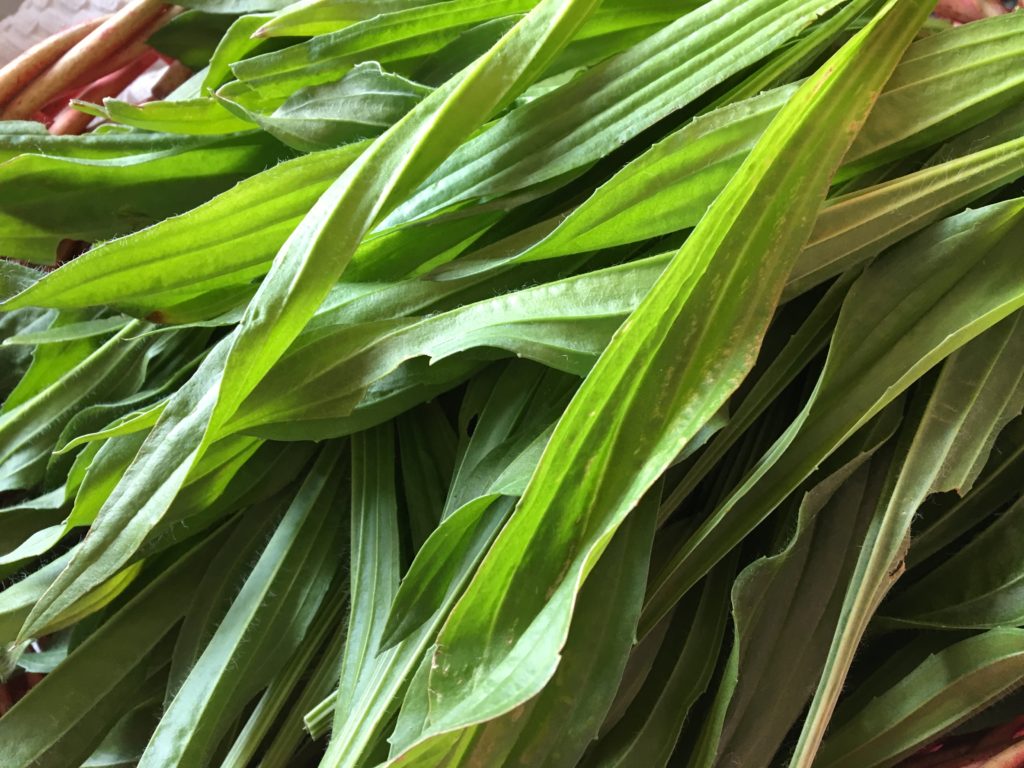
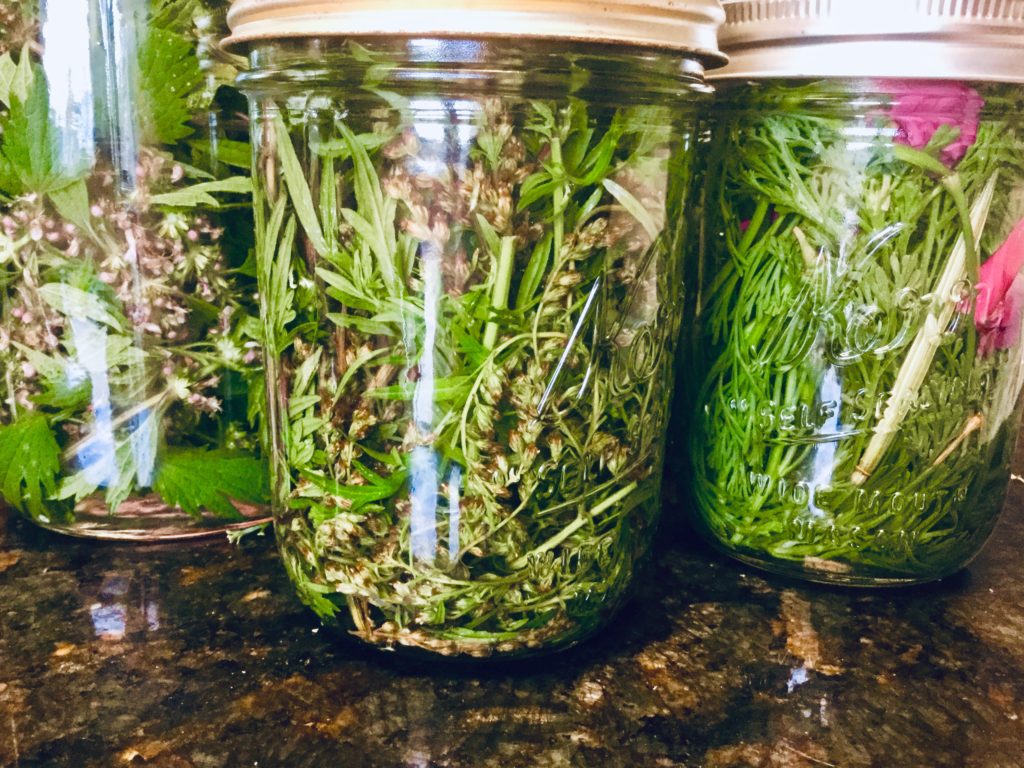
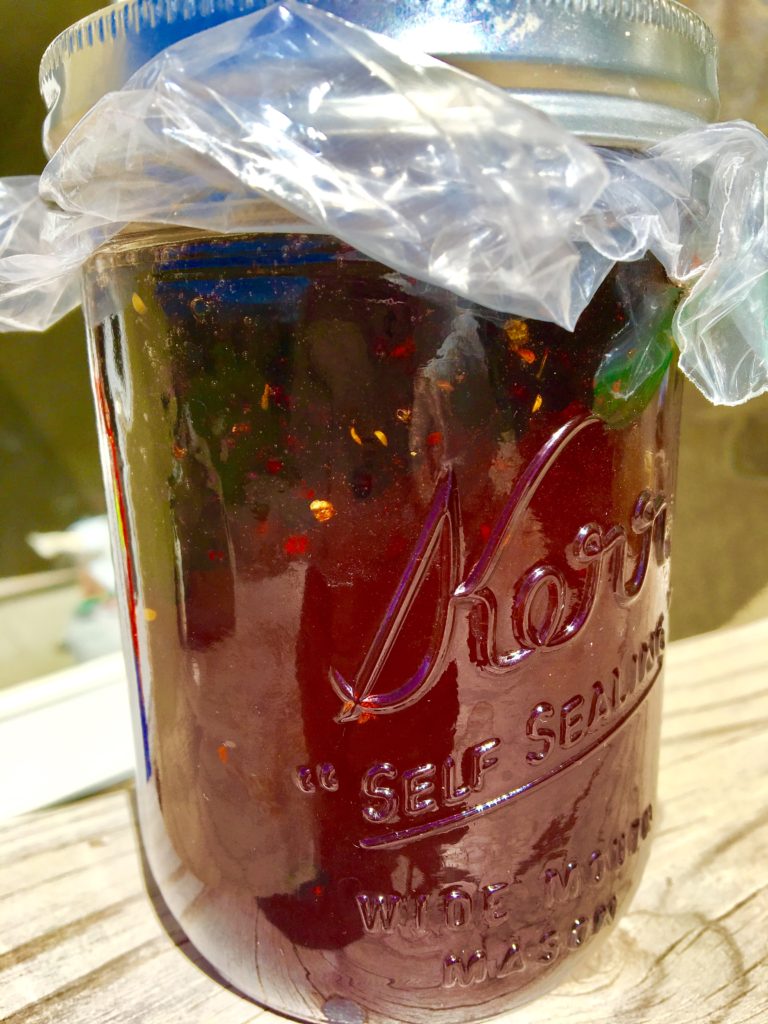
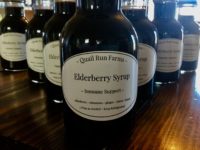
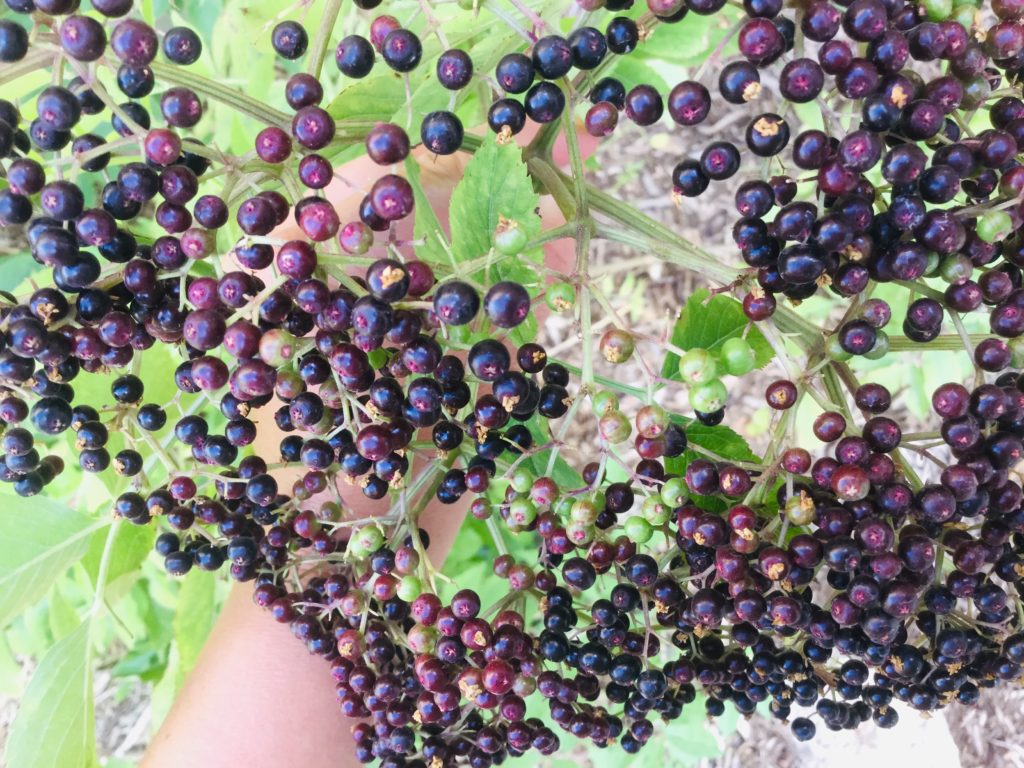
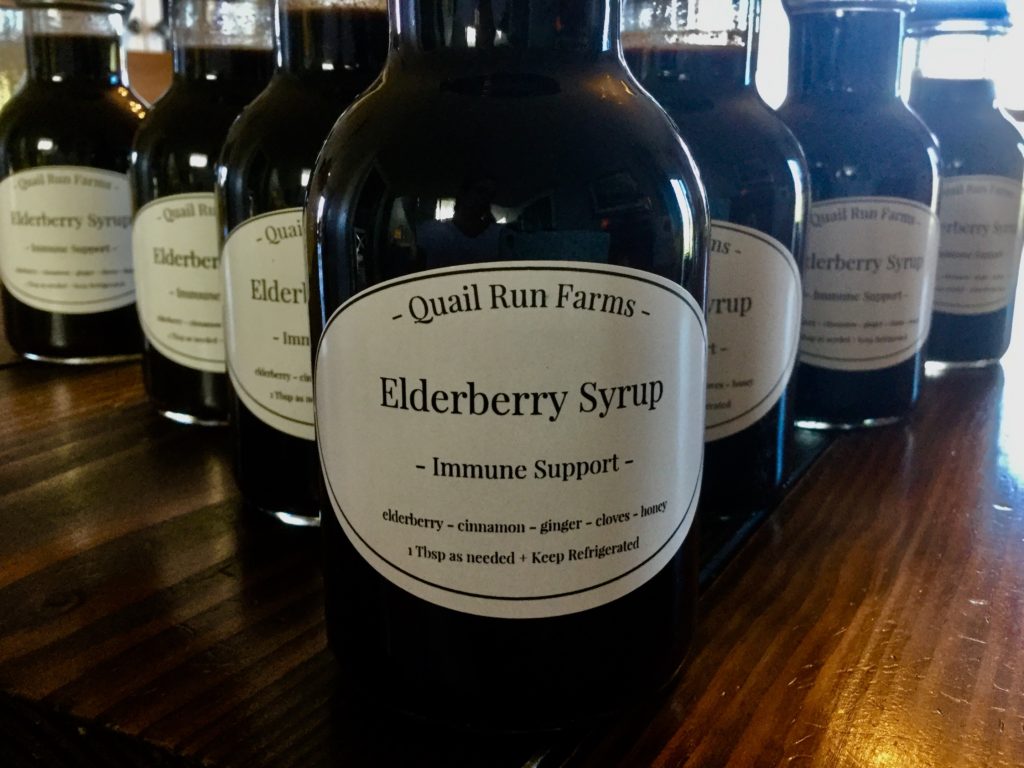
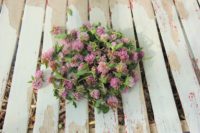
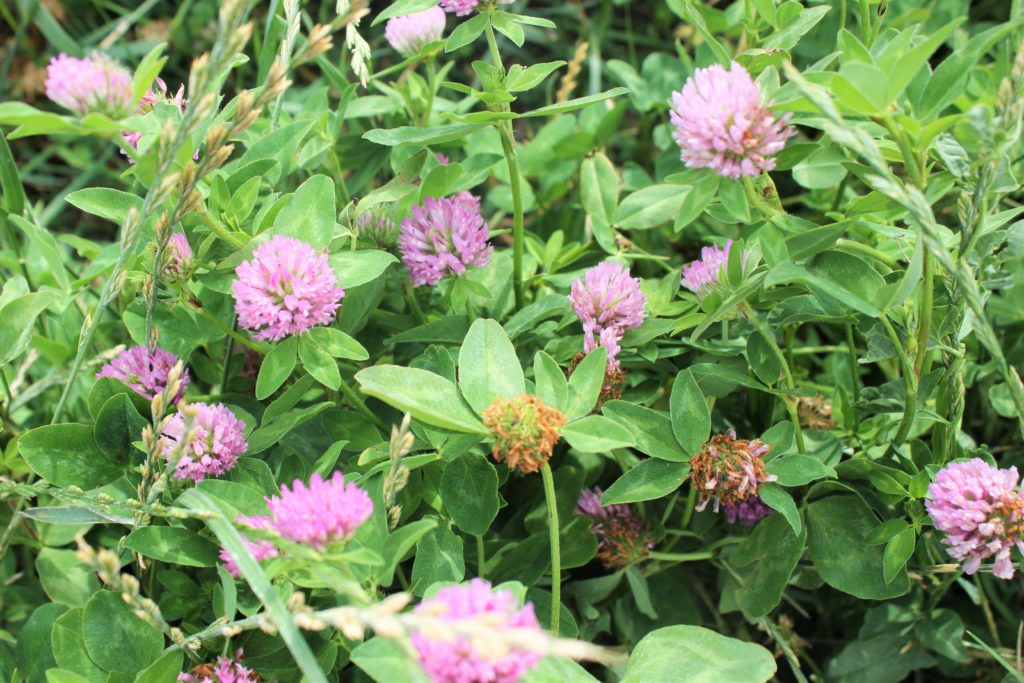
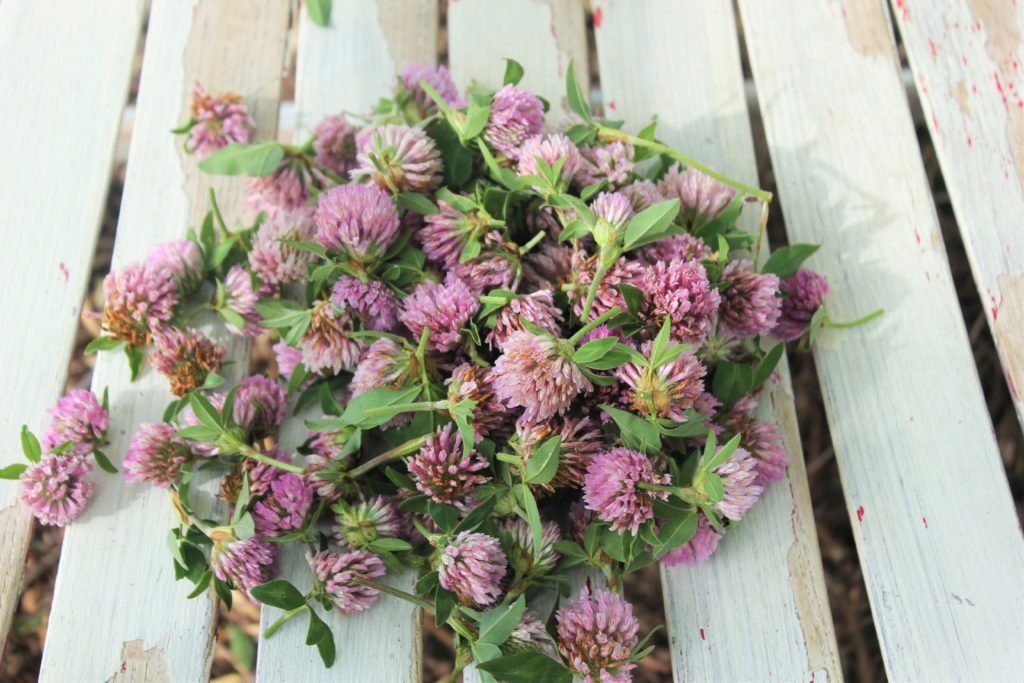
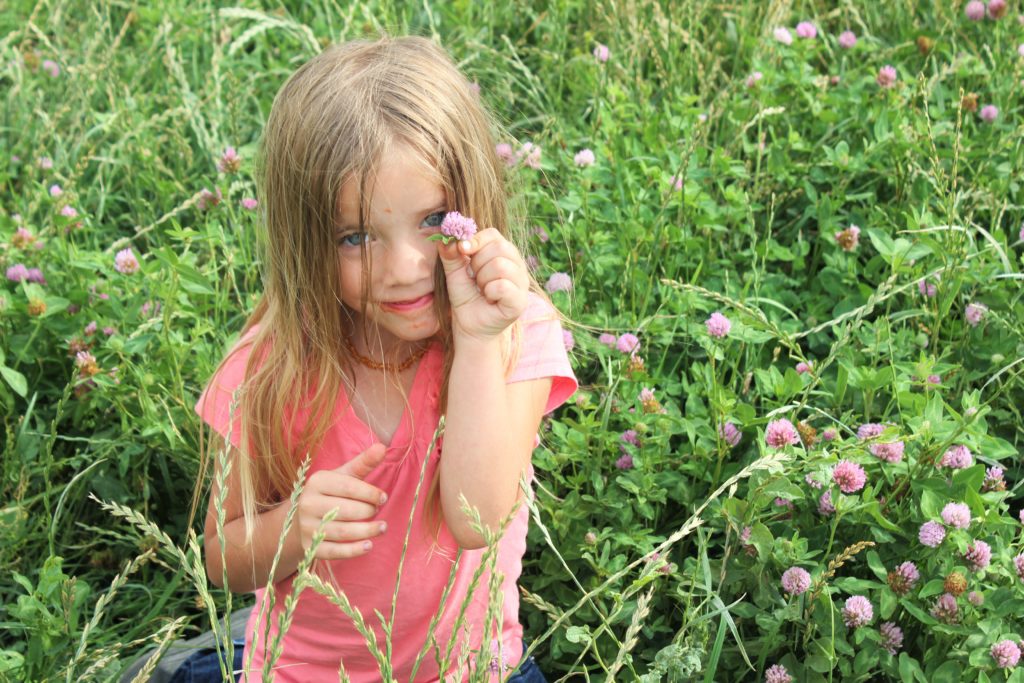 When the clover gets tall and starts to blossom its time to harvest! Cover is a fun herb to harvest, especially for the little kids, its very simple, just pop the flower off. My little ones like to recite the line “Mama had a baby and her head popped off!” while picking clover, they also like to snack on the blossoms as we gather. We get a big paper grocery sack and fill it up about half way full. you have to be careful drying clover blossoms, they need a lot of air flow to dry without molding. Some people suggest laying the blossoms in a basket in a single layer not touching. I don’t have the room to dry herbs that way, so I put them the paper grocery sack and leave it on the kitchen counter where I see it often, and several times a day I give it a shake or stir. The paper helps wick away the moisture and stirring it often keeps the blossoms separate and allows for air flow. It takes about two weeks to dry in my neck of the woods, but we are dry, it will take longer in more humid climates.
When the clover gets tall and starts to blossom its time to harvest! Cover is a fun herb to harvest, especially for the little kids, its very simple, just pop the flower off. My little ones like to recite the line “Mama had a baby and her head popped off!” while picking clover, they also like to snack on the blossoms as we gather. We get a big paper grocery sack and fill it up about half way full. you have to be careful drying clover blossoms, they need a lot of air flow to dry without molding. Some people suggest laying the blossoms in a basket in a single layer not touching. I don’t have the room to dry herbs that way, so I put them the paper grocery sack and leave it on the kitchen counter where I see it often, and several times a day I give it a shake or stir. The paper helps wick away the moisture and stirring it often keeps the blossoms separate and allows for air flow. It takes about two weeks to dry in my neck of the woods, but we are dry, it will take longer in more humid climates.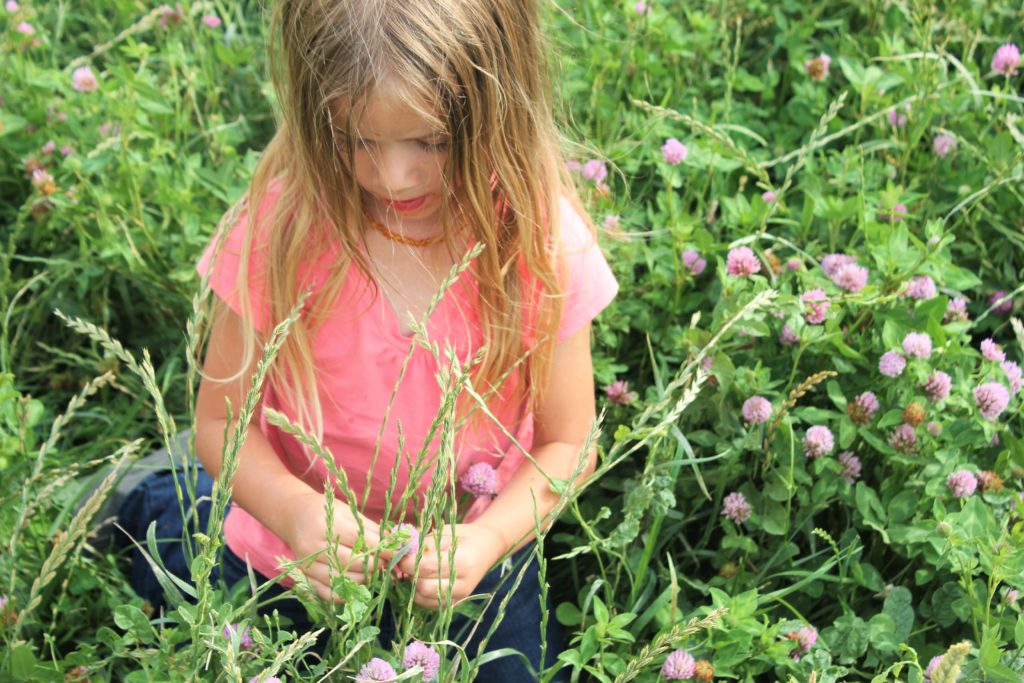 Red Clover is an infusion that I use in my regular rotation, I plan on making it my ally when I move from child bearing years to my menopausal years and beyond.
Red Clover is an infusion that I use in my regular rotation, I plan on making it my ally when I move from child bearing years to my menopausal years and beyond.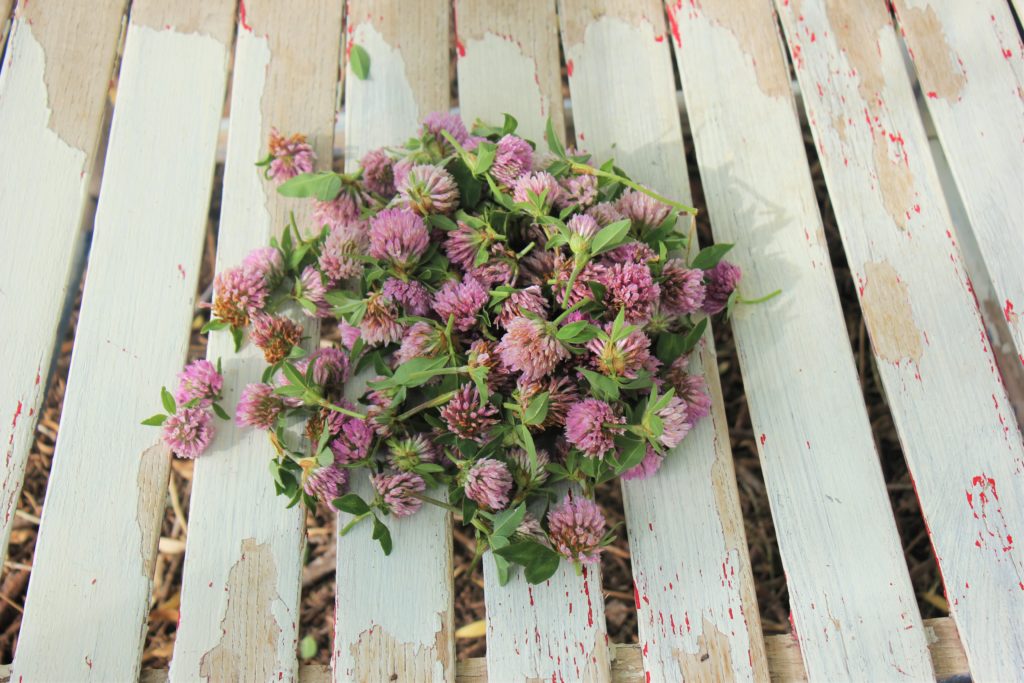
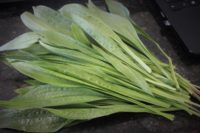




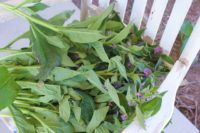
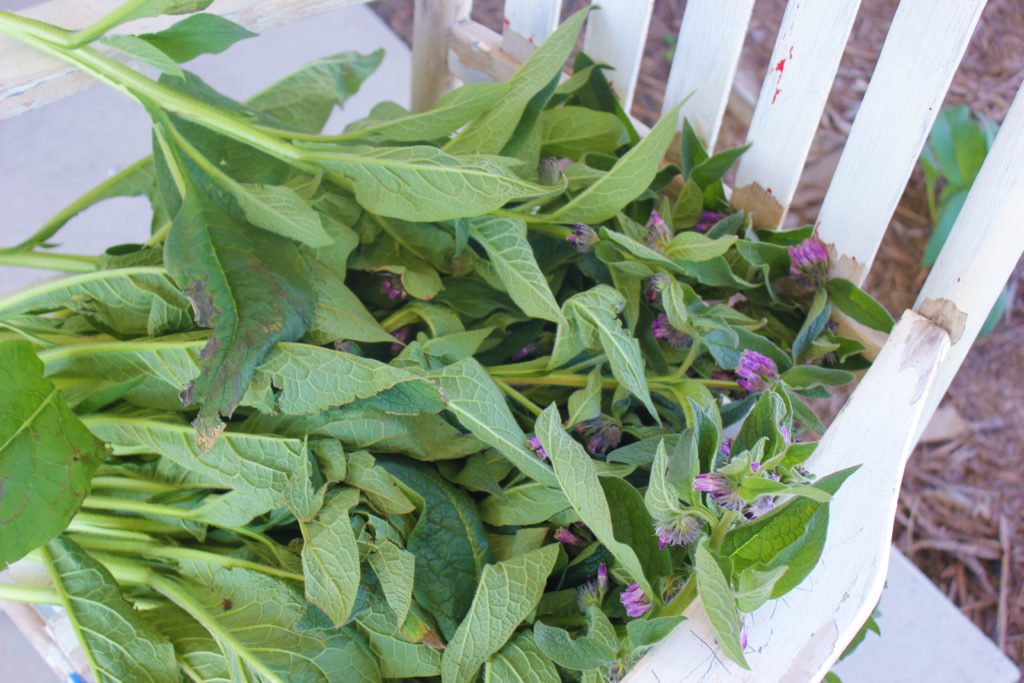
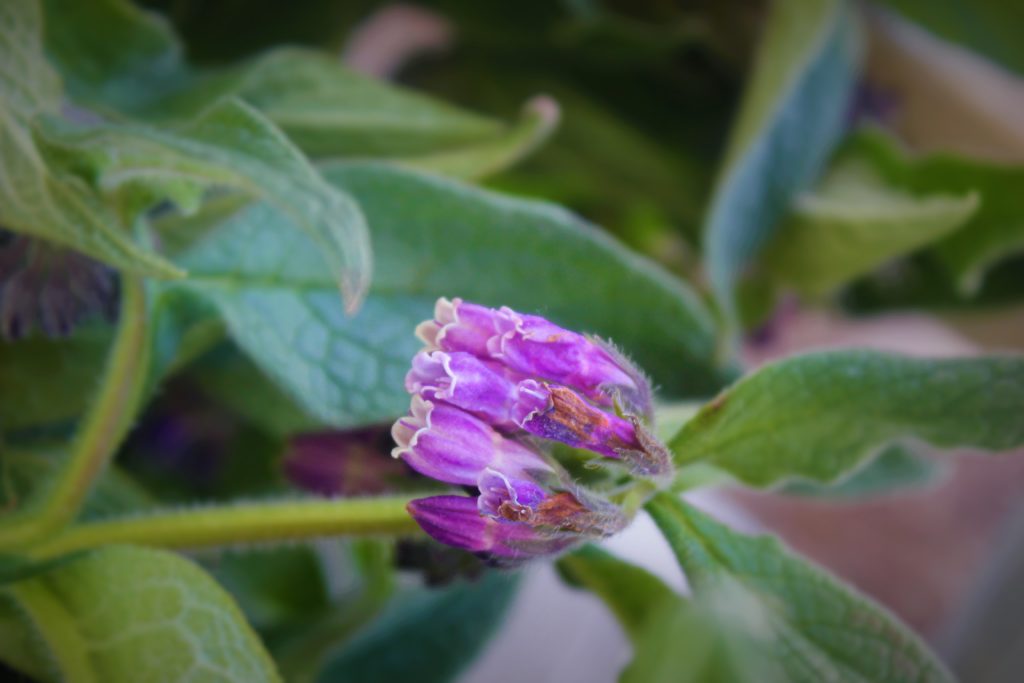 Comfrey is quite easy to dry, but there are some considerations. The leaves are quite big and hold a lot of moisture, therefore they need to be dried loosely. Typically a person will gather a large bunch of plant materials, tie it in a bundle and dry. This won’t work with comfrey, I have ruined many batches by doing it this way, the comfrey will mold, and we don’t want that. Instead I have found that it is just as easy to hang each stalk on a nail and it drys very quickly this way, with out the mold.
Comfrey is quite easy to dry, but there are some considerations. The leaves are quite big and hold a lot of moisture, therefore they need to be dried loosely. Typically a person will gather a large bunch of plant materials, tie it in a bundle and dry. This won’t work with comfrey, I have ruined many batches by doing it this way, the comfrey will mold, and we don’t want that. Instead I have found that it is just as easy to hang each stalk on a nail and it drys very quickly this way, with out the mold.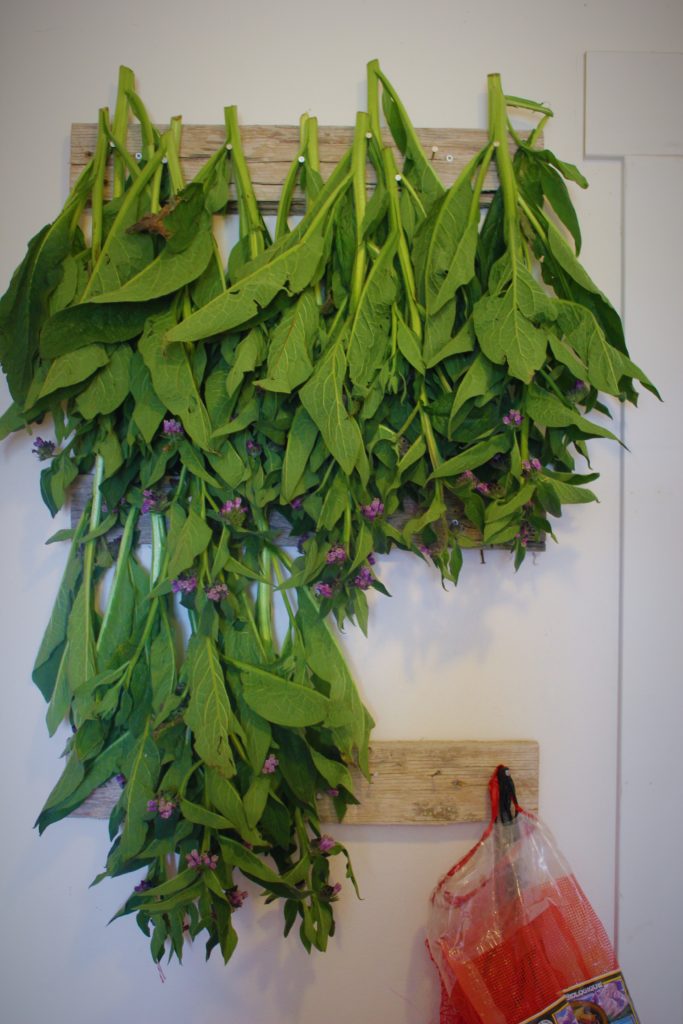
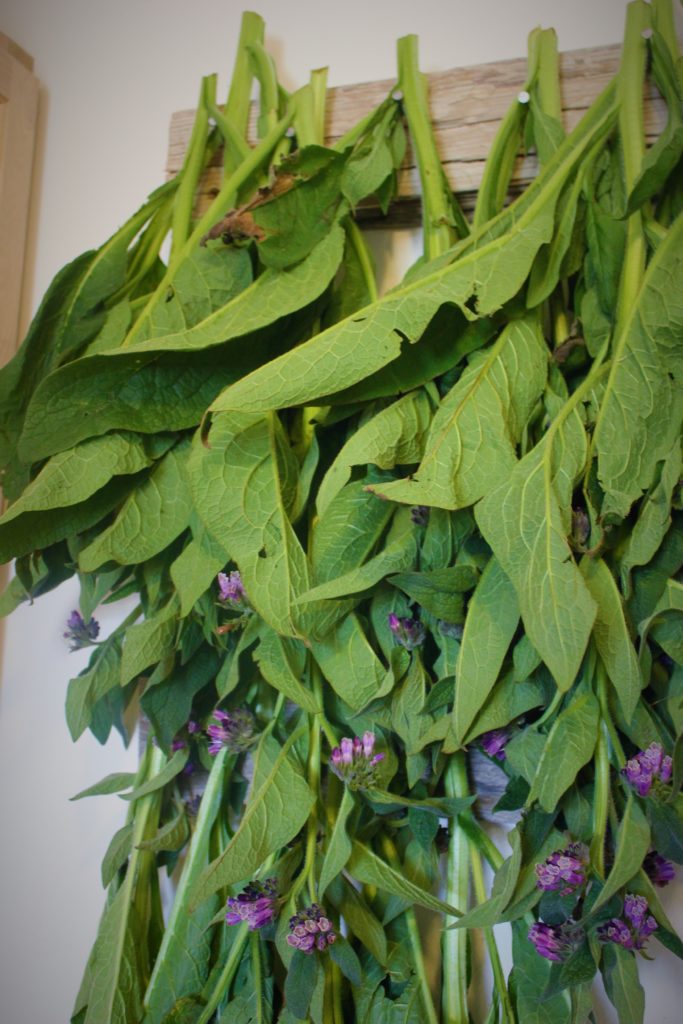
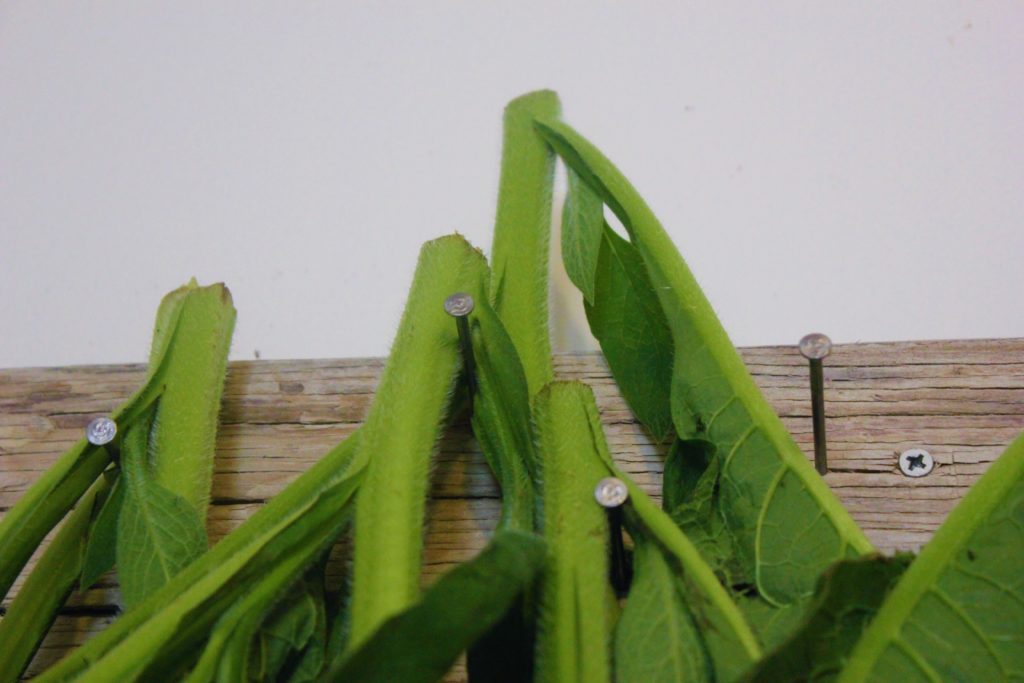 After a couple weeks the comfrey will be nice and dry. At this point I will chop it up and store it in brown bags in a dark dry place. The reason I use brown bags is so any moisture that is left can be wicked out, instead of growing mold. I will use this through out the year in herbal infusions and poultices. Comfrey is one of my favorites for the garden, and for the body.
After a couple weeks the comfrey will be nice and dry. At this point I will chop it up and store it in brown bags in a dark dry place. The reason I use brown bags is so any moisture that is left can be wicked out, instead of growing mold. I will use this through out the year in herbal infusions and poultices. Comfrey is one of my favorites for the garden, and for the body.